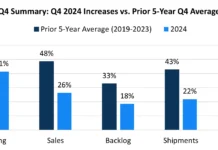by Leo LaGrotte
One fairly new investment that has gained attention in recent years is the senior life settlement. What are senior life settlements?
Life settlements evolved from the viatical industry in the 1990s, when people diagnosed with terminal illnesses such as AIDS, usually facing life expectancies of three years or less, sold their life insurance policies on the secondary market to cover costs of their health care. These types of investments have gradually increased over the years and have paved the way for investors to become more attracted to senior life settlements.
A senior life settlement is the sale of an unwanted or unnecessary life insurance contract by an elderly individual to a third party investor for an amount less than the face value, but in excess of the cash surrender value.
Life settlements were developed out of the need for seniors to attain access to their death benefit while still living. With a life settlement, the insured has a medically determined life expectancy of three to seventeen years. Such a sale allows individuals to sell an asset for fair market value and provide funds for their personal use.
Senior life settlements are used when the circumstances that the policy was originally purchased under have changed. There are several situations that can create a need for a life settlement:
- The policy owner owns multiple life insurance policies and wishes to eliminate one.
- The beneficiary for whom the policy was originally purchased is now deceased or no longer has a need for the policy.
- A reduction in the value of the policy owner’s estate reduces the tax liability for which the policy was originally designed to provide.
- The policy owner wishes to make a charitable contribution, but would be faced with liquidity constraints as the result of such a donation.
- The policy owner can no longer afford to pay the premiums.
For example:
An 86-year-old female insured with a universal life policy with a face amount of $1.6 million and a cash-surrender value of $0 could no longer afford the annual premium requirements. The trustee of this policy, a bank, made the decision to sell the policy rather than continue to pay the premium. A senior life settlement provider purchased the policy for $700,000.
The owners of a $1 million survivorship policy, a 77-year-old male and a 67-year-old female, no longer needed this policy for estate tax purposes due to the recent federal estate tax law changes. They could surrender the policy for the cash value of $105,000. They wanted to use the money for a down payment on a retirement home, so they sold their policy on the secondary market for $300,000.
A business owner, age 69, had a 10-year, $500,000 term-life insurance policy that was about to expire and no longer needed the coverage after selling his business. The business owner decided to convert the policy to a universal life contract and sell it in the secondary market, rather than surrender the term policy. A senior life settlement provider purchased the policy for $50,000.
During the process of a senior life settlement, the policy owner enters into a contract with a third-party investor and receives a lump-sum cash payment from the investor. In exchange, the owner will transfer ownership of the policy to the investor. The investor will appoint a new beneficiary and will collect the death benefit upon the insured’s death or the maturity date of the policy. Upon the purchase of the contract the buyer/investor will continue to make premium payments throughout the course of the insured’s life or until the policy matures.
The value of an insurance policy is based on various criteria. Among the important factors in determining the life settlement are the following:
- Life expectancy of the insured
- Face amount of the policy
- Premium requirements to keep the policy in force
Life settlements have progressed quickly since their beginning as viatical settlements in the 1990s. According to recent studies performed by the University of Pennsylvania business school, The Wharton School, consumers were paid about $340 million for their underperforming life insurance policies in 2003. Another study performed by Conning & Company Research found that senior citizens owned approximately $500 billion worth of life insurance in 2003, of which $100 billion was owned by elderly individuals with qualifying policies. According to estimates by the leading investors in the industry, life settlements will total $10 billion to $15 billion this year alone. Private studies estimate that this equates to around 19,000 policies sold. On current progress, it is expected the global market will be worth around $125 billion by 2015. n
Leo M. LaGrotte Jr. is the president and chief executive officer of Life Settlement Advisors. LaGrotte has worked in the insurance and estate planning industry for more than twelve years and has a strong background in the life insurance and the life settlement marketplace. LaGrotte is a member of the National Committee on Planned Giving, the Community Bankers Association, and the Estate Planning Council. He earned his bachelors degree in Business Management / Entrepreneurship from Ball State University. The author can be reached at (317) 488-5571 or by emailing llagrotte@lsa-llc.com.
Time for a Policy Review?
A policy performance review (PPR) is a comprehensive audit of an existing life insurance policy. All the vital data regarding the policy and the insured is compiled and reviewed. It generally takes approximately two weeks to examine the current policy and available alternatives. Many people with a policy issued two or more years ago will have the option of money saving alternatives. Many of those same people have not only had the option to save money, but also have been able to lengthen the guarantee of their coverage with a lifetime guaranteed product. Life Settlement Advisors likes to think of life insurance as the heart of the financial plan. If you have life insurance policies more than two years old, it may be time to get a policy check up.




